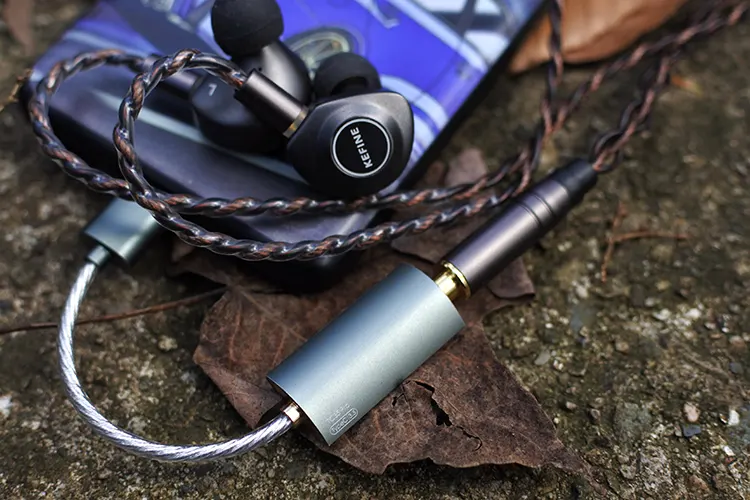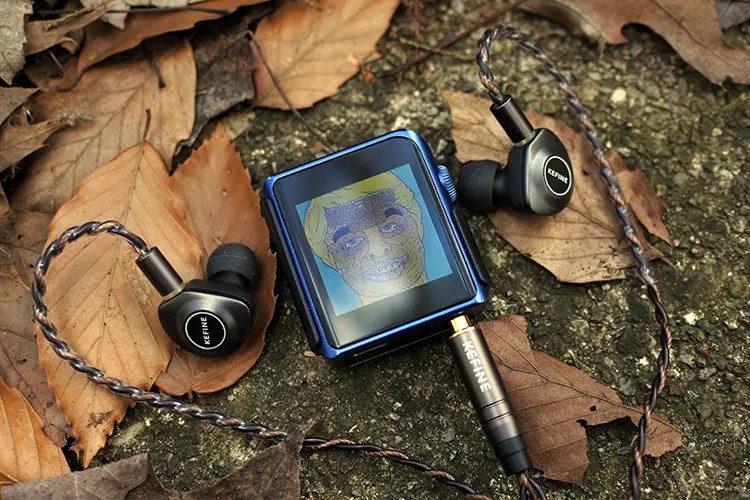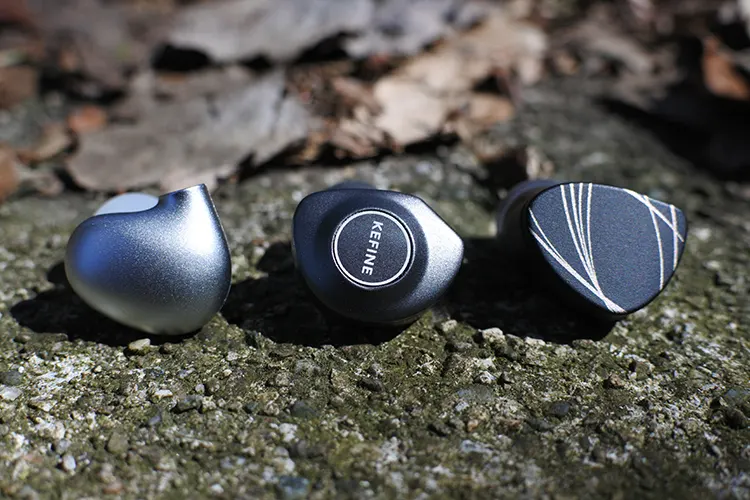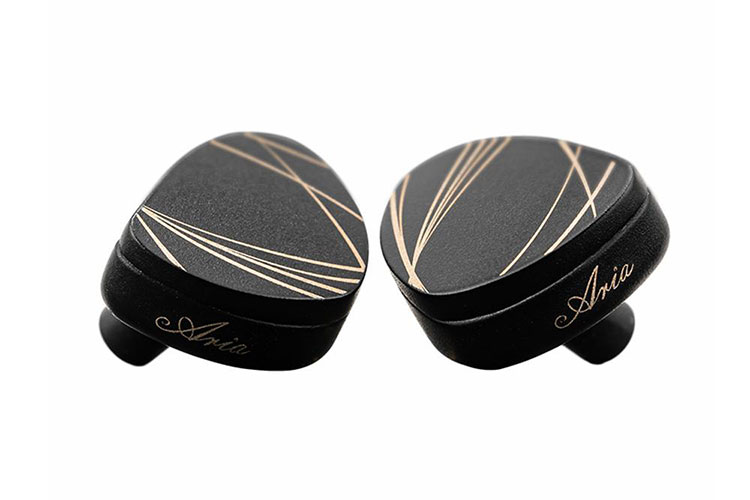Synergy
Efficiency
The Delci has a sensitivity of 108 dB +/- 3bD @1kHz and an impedance of 28 Ohms.
These specifications are right where they need to be to make the Delci work well with basically everything. It’s not so easy to drive that even at the lowest volumes it’s too loud, nor is it so difficult to power that devices lack the headroom to reach high volumes.
Best of all, the Delci’s output is quite clean with very little to no background hiss across a wide variety of sources and dongles/DACs.
Dongle Pairings
The Venture Electronics (VE) Odyssey HD is an affordable dongle. While not a perfect companion to the Delci, the price makes flaws forgiving.
There is some background noise when no music is playing and during quiet moments of a track. Any sound drowns it out though, so it’s not a big deal in my experience.
A larger issue is the lack of low-volume presence. The Odyssey HD was made for VE’s various demanding products. As such, even at the lowest volume the Odyssey HD is far from quiet.
Lastly, the Odyssey HD has an uncolored presentation that does little to affect the Delci’s stock sound. Bass depth, mid-range clarity, and treble clarity and detail are retained, and the wide staging stays put.
Next up is the ddHiFi TC35 Pro (Eye). This dongle has a warm, analog signature that pairs well with the Delci.
The warmth does bring up the Delci’s mid-bass presence more than I’d like, but if your player has an EQ function you can dial this out easily. Otherwise, the TC35 Pro stays out of the way.
The Delci’s bass extension is retained, the midrange remains crisp and detailed, and the treble presentation stays sparkly. Staging width was reduced compared to some of my other dongles and DACS, but it wasn’t noticeable unless doing a head-to-head comparison.
The driving power of the TC35 Pro is not an issue with the Delci getting uncomfortably loud. This means that low-volume performance is poor, and even at the lowest levels, the Delci remains very audible.
Background hiss isn’t an issue. With no music playing and during quiet points on a track, the background remains black and hiss-free.
DAP Pairings
Shanling’s M0 makes for a fantastic companion to the Delci. It has a warm-leaning, old-school analog signature that helps take the edge off the Delci’s upper ranges.
The M0 also offers a volume range that matches well with the Deli’s power specifications. At the lowest volume, the sound is barely audible, while I can’t make it to the highest volume before it gets dangerous.
There is no audible background noise either. Regardless of the volume level, there is no hiss, and you are greeted by a clean, black background always.
Later versions of the M0’s firmware added three custom EQ slots. Since I found the Delci receptive to EQ and mid-bassier than I would like, I was able to dial it down a few dB and tailor it more to my preferences.
F.Audio’s S1 DAP is a niche player in a tech segment that is already quite niche. While one of my favorite budget DAPs, it is a lesser pairing for the Delci.
On first listen, during a quiet moment I noticed the faintest evidence of background hiss. I’m not entirely surprised given the S1’s output is tailored for hard-to-drive products, which the Delci isn’t, but it was still disappointing to hear.
The high-power output of the S1 also means that the lowest volume level is still quite audible, and I found it a little too loud with the Delci for my usual nightly listening ritual. On the other hand, if you like to listen at ridiculously loud levels, your needs will be met with this pairing.
The S1 has an uncolored, nearly neutral signature that does well to leave the Delci’s stock sound alone. The custom EQ is very limited though, meaning the bass levels couldn’t be tailored down in a way that met my personal preferences.
Select Comparisons
TinHiFi T2 Plus
Technical
Both earphones feature single 10mm dynamic driver configurations. The TinHifi T2 Plus utilizes a nickel-zinc alloy plating on the diaphragm, while KEFINE utilizes a DLC (diamond-like carbon) coating.
Both models utilize machined aluminum for their housings and have a removable cable, but TinHifi went with MMCX connectors to the Delci’s 2-pin style.
The Delci is slightly more sensitive at 108 dB vs 104 dB and has a lower impedance of 28Ω compared to the 32Ω of the T2 Plus.
Design
KEFINE’s Delci has a compact, understated design with soft edges in a lightweight, 5.3g (w/ ear tip) package. In contrast, the T2 Plus’s even more compact, smooth, pebble-like shells are heavier at 5.6g (w/ ear tip).
The T2 Plus’s cable is lighter (17.2g vs. 18.9g), more comfortable, and has better handling. The Delci’s cable has a stiffer sheath with a denser wire assembly for potentially better durability.
Neither is a particularly strong performer when it comes to passive isolation with both earphones requiring a volume bump to counter outside noise in the same environments. The T2 Plus’ volume requirements are less, but it’s by a negligible amount.
Both earphones have low-profile shells with smooth edges to prevent hot spots and discomfort, but the T2 does all this just a little bit better. As with the Delci, I ran into fit issues in the left ear with the T2 Plus, but not as consistently, also rectified through third-party tips.
Visual appeal will be quite subjective given these two take opposing paths in their aesthetics. The T2 Plus is light and bright whereas the Delci is darker and more subtle.
When it comes to looks, I’d be happy with either, but the T2 Plus gets the overall nod for design for one reason. When not in use, holding it in my hand and rubbing the shell between my thumb and forefinger proves to be oddly cathartic.
Eh. Sometimes there’s a tactile proponent to loving audio.
Performance
The T2 Plus gives off more of a “hi-fi” vibe than the Delci thanks to a more relaxed low end which shifts the listener’s perception to the mids and upper ranges.
Treble on the two are similar in terms of weight, detail, and clarity performance, but the T2 Plus has more going on in the brilliance region which makes it more energetic. This also highlights that it has less control, with notes presenting some splash.
The midrange of the Delci is warmer and thicker but lacks the more natural tonality of the T2 Plus. Clarity and detail are quite like one another with the T2 Plus having a more forward and vocal-centric presentation.
Sibilance is managed better on the T2 Plus, both in the default signature and how it is handled when mastered into a track. As such, it paired better across a wider variety of artists and tracks of varying quality.
Bass is where the two take different paths with the Delci offering considerably more bass overall, better extension, and a more boosted, warmer mid-bass. The lack of visceral feedback in the T2 Plus’s presentation is countered by considerably more texture while matching the Delci’s impressive speed and control.
While the Delci’s soundstage is wider, the T2 Plus’s is considerably deeper and more well-rounded. It gives off a more realistic sense of space and layers tracks more effectively.
While the differences are minimal, the Delci images with more precision and do a better job with instrument separation too.
Moondrop Aria 2021
Technical
Like the Delci, the Aria 2021 utilizes a 10mm dynamic driver, but with a dual-magnet setup. Where KEFINE selected a DLC (diamond-like carbon) coating for their driver, Moondrop went with an LCP (liquid crystal polymer) coating.
The Aria 2021 is more sensitive at 122 dB compared to the Delci’s 108 dB. It also has a higher 32Ωimpedance vs. the Delci at 28Ω.
Design
We have already established the Delci is a svelte 5.3g (w/ ear tip), so how does the Aria 2021 compare? It’s a straight-up chonker, nearly doubling the Delci’s weight at 10.2g (w/ ear tip).
Moondrop’s cable has a cloth coating and while it looks nice, it is still a cloth cable and has the downfalls that come along with that. It kinks easily and tangles with gusto, though noise management is unexpectedly effective, and it uses a common 0.78mm 2-pin system which is lovely.
Regardless, KEFINE’s cable is superior in nearly every way, except lightness. The Aria 2021’s cable is a feathery 14.7g to the Delci’s 18.9g, and it’s noticeable in use.
Isolation is not a strong point for either product, for the same reasons. The shallow fit design and dual vents let in plenty of outside sounds, requiring a volume boost or foam tips to counter.
While both earphones have low-profile shells, the Aria 2021 is the thicker and heavier of the two IEMs. Even so, I found it more comfortable and didn’t run into any issues with fitment in either ear.
I think this comes down to the nozzle angle which is less aggressive on the Aria 2021. There is also a raised portion of the inner body around the base of the nozzle that helps the shell conform better to my ear.
The Aria 2021 is a more attractive earphone to my eyes. The matte black shells with rose gold accents are classy but still quite subtle, and free of any branding.
While I haven’t had any issues with the paint chipping, others have. This will not be a worry for the Delci whose anodized exterior is considerably more durable and should stand up to abuse much better.
Performance
The Aria 2021 and Delci are both great all-rounders with warm signatures, plenty of detail, and few faults. While one better matches my tastes, they perform equally well overall, just in different areas.
Treble on the Aria 2021 is focused squarely on the presence region that gives it a level of clarity and resolution that matches the Delci. The Delci places more emphasis on the brilliance region though, giving it a leaner, more sparkly, and airy presentation leaving the Aria 2021 sounding darker.
The midrange on the Aria 2021 is more forward and dense while matching the Delci’s impressive clarity and vocal coherence. As such, Moondrop’s offering provides a more satisfying vocal performance.
Bass on the Delci is more emphasized and of higher quality in most areas. While it doesn’t offer the same amount of texture as the Aria 2021, the extension is better and more visceral, the notes are tighter and more controlled, it handles congested, rapid notes more effectively, and it offers more punch.
When it comes to staging the Delci’s lack of depth leaves it as the less dynamic of the two. The Aria 2021’s default vocal position is closer to the head and sounds don’t spread to the sides as far, but it can draw sounds in closer and the additional depth leaves the stage feeling evenly large everywhere.
The Aria 2021’s channel-to-channel imaging is quite nuanced and accurate, but a step behind what the Delci can do. Though the Delci fails to layer as well, instrument separation is superior, helped by the leaner, brighter presentation.
Our Verdict
The KEFINE Delci is a strong budget IEM offering thanks to a lightweight but durable build, fantastic cable, and good sonic performance. The bass is visceral and well-extended, its midrange is forward and coherent, and it balances things out with a moderate amount of treble sparkle that doesn’t offend.
It is not without flaws though. I found the ergonomics poorly suited to my left ear and as such fit was very tip dependent.
The low end lacks texture, the mids can be unforgiving of sibilance, and the staging lacks depth giving the Delci a wall-of-sound effect that makes track layering below average.
Even still, these faults do not ruin what is otherwise a great listening experience. The Delci is a good product and easy to recommend.
KEFINE Delci Technical Specifications
- Frequency Response: 20Hz–20 kHz
- Sensitivity: 108 dB +/- 3dB
- Impedance: 28 Ohms






